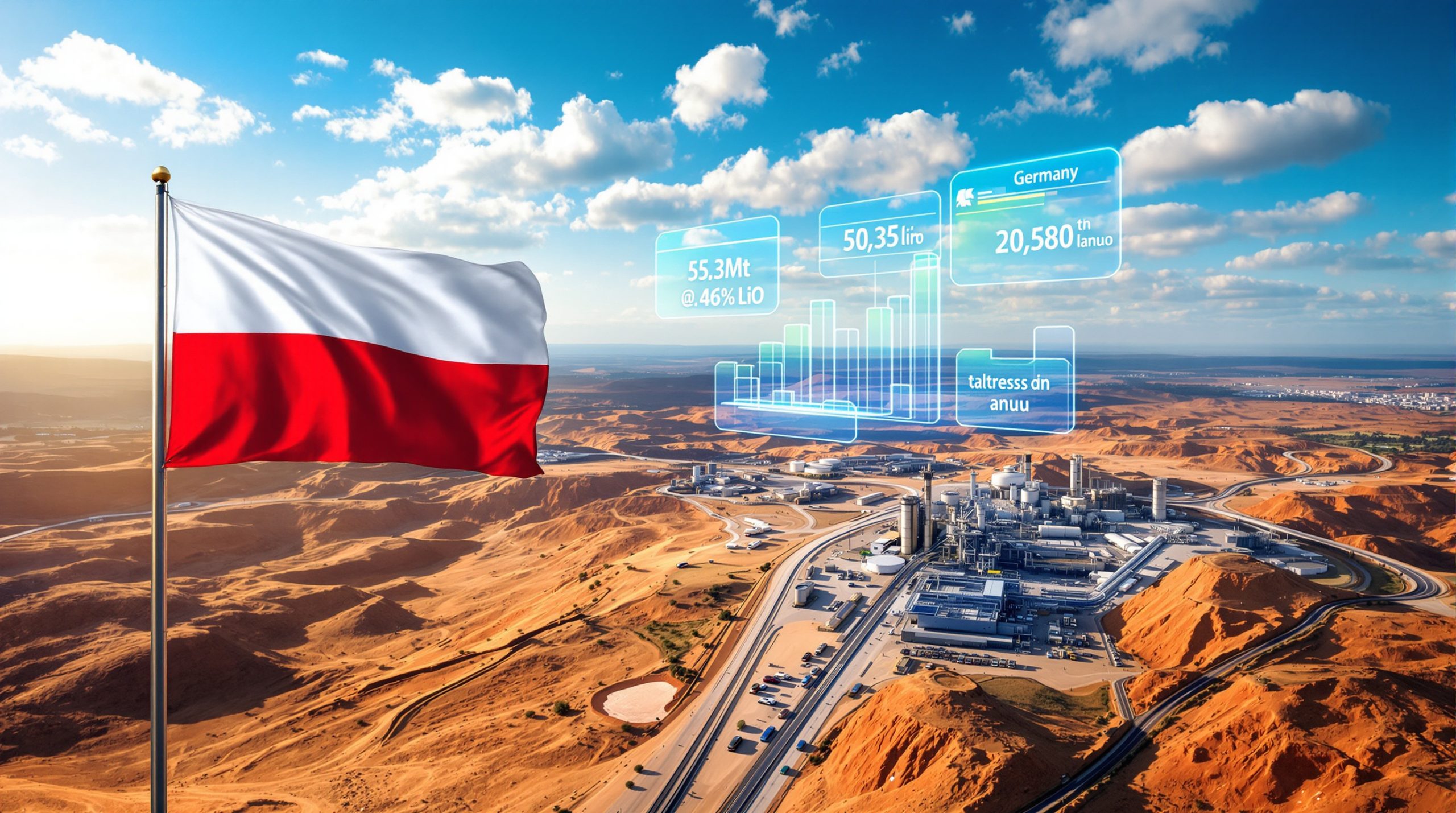Vianode launches first recycled graphite product 2025 has generated considerable excitement across battery technology circles. This breakthrough marks an innovative shift towards sustainable battery production. In addition, the product has become integral to discussions on environmental impact and circular economies in energy storage systems.
What is Vianode's First Recycled Graphite Product?
Vianode has marked a significant milestone in sustainable battery technology with the launch of its first recycled graphite product 2025. The product is a major component of a circular battery value chain. For instance, its introduction supports the battery recycling revolution in Europe by aligning European sustainability standards.
The product, featured in Vianode's "next-generation material series", is available for customer evaluation with comprehensive samples. Battery manufacturers receive detailed data sheets and performance characteristics, all of which showcase the product’s potential to transform battery production.
Developed at Vianode's industrial pilot project in Kristiansand, Norway, the recycled graphite is the culmination of several years of rigorous research. The pilot facility, which has operated since 2021, provided a testing ground for innovative recycling processes before moving to commercial production.
Dr Elena Kovacs, a battery materials specialist, stated, "The battery industry has been seeking viable recycled graphite solutions for years." Consequently, her endorsement highlights how Vianode's product fills a crucial sustainability gap without compromising on performance.
How Does Recycled Graphite Reduce Environmental Impact?
Vianode's recycling method converts waste into high-performance synthetic anode graphite with a 90% lower carbon footprint compared to conventional methods. Furthermore, this improvement plays a significant role in reducing overall emissions. Each ton of recycled graphite produced avoids approximately 15-18 tons of CO2 equivalent emissions.
By utilising recycled materials, Vianode reduces the reliance on virgin graphite. For example, conventional extraction requires energy-intensive mining operations that lead to deforestation, soil erosion, and water pollution. Consequently, the recycled approach not only eases environmental burdens but also supports a circular economy.
This closed-loop process resonates within broader industry trends. For instance, sustainable initiatives aimed at decarbonisation in the mining sector are gaining prominence. Moreover, such efforts demonstrate how advanced recycling processes can significantly lower emissions while maintaining material quality.
A further environmental benefit is the reduced need for new mining activities. Transitioning away from resource-intensive extraction methods mitigates ecological disruption. In addition, analysing lifecycle assessments confirms that the overall CO2 reduction is one of the most impressive achievements in sustainable battery materials.
What Makes Vianode's Recycling Process Unique?
Vianode's proprietary recycling process recovers both natural and synthetic graphite used in batteries. This dual-recovery capability not only maximises material reclamation but also ensures that almost no graphite enters the waste stream. The process has been rigorously tested to enhance the uniformity of the final product, ensuring consistent particle size, shape, and electrochemical performance.
Furthermore, the improved homogeneity makes the recycled graphite a reliable alternative to conventionally mined materials. For instance, battery performance and longevity see noticeable improvements because the recycling process meets or exceeds that of virgin graphite. Consequently, this robust technology has attracted global attention.
The technological innovation is also customisable. Vianode can tailor recycled graphite to meet specific customer demands, making it suitable for various battery applications—from high-power setups to high-energy density configurations. In addition, independent materials science laboratories have validated the product’s performance against traditional materials, making a strong case for its widespread adoption.
By continuously investing in R&D, Vianode ensures that their innovations remain at the forefront. In parallel, the company is exploring advanced formulations that cater to next-generation battery technologies. This development further accentuates the importance of mining industry decarbonisation efforts as part of their overall sustainable strategy.
Why is Recycled Graphite Crucial for Battery Production?
Graphite is a critical component in lithium-ion batteries, constituting approximately 25-30% of a typical electric vehicle's battery mass. Its unique electrochemical properties are essential for storing and releasing lithium ions during charge and discharge cycles. Consequently, the importance of sustainable graphite sourcing cannot be understated.
Furthermore, each EV battery typically requires 52-64kg of graphite, which, when multiplied across millions of vehicles, creates enormous demand. Such demand challenges the sustainability of conventional mining operations. In response, Vianode launches first recycled graphite product 2025 as an innovative remedy that creates a continuous, closed-loop supply chain.
Sustainable sourcing meets both regulatory and market pressures. With increasing mandates such as the EU Battery Regulation, manufacturers must integrate recycled materials into their production lines. In addition, the product embodies a shift towards environmentally responsible production practices. This closed-loop process helps bypass the traditional extract-use-dispose model that has previously dominated the industry.
The environmental benefits of recycled graphite extend beyond carbon reduction. A lighter environmental footprint also helps manufacturers meet regulatory compliance. Moreover, this innovation supports long-term industry sustainability and encourages the development of more resilient supply chains.
How is Vianode Expanding its Production Capacity?
Vianode reached a significant milestone with the opening of its full-scale production plant in Herøya, Norway in October 2024. This facility marks the transition from pilot to commercial production and validates the recycled graphite's market potential. The investment, which totals approximately €195 million, aligns with broader industry trends in energy storage innovation.
The Norwegian government’s €30 million grant under the Battery Important Project of Common European Interest (IPCEI) further bolsters these efforts. In addition, this financial support underscores the strategic value placed on decarbonisation. For example, initiatives similar to these complement efforts regarding the role of mining in the clean energy transition.
Plans to expand into North America have already been announced. The forthcoming plant scheduled for 2027 will serve the expanding U.S. battery manufacturing sector. It will also address supply chain security by providing sustainable graphite to local markets. Consequently, Vianode's strategy offers both regional reliability and global impact.
Moreover, the company continues to invest in R&D. The development of specialised graphite formulations for next-generation applications ensures they remain ahead of industry trends. These innovative products may also benefit from integration into further emerging recycling and decarbonisation initiatives, such as discussions around ESG challenges and opportunities in mining.
Who Are Vianode's Major Customers and Partners?
Vianode recently secured a landmark deal with General Motors, covering anode graphite supply over several billion USD through 2033. This long-term agreement offers stability to both Vianode and GM, as the latter secures access to sustainable battery materials. In turn, GM benefits from a reliable supplier that aligns with its electrification goals.
Significantly, the supply chain integration includes the Ultium Cells joint venture between GM and LG Energy Solution. A US-based production facility will enhance domestic battery supply, reinforcing local content mandates. In addition, this strategic partnership exemplifies the mining industry decarbonisation efforts already underway in related sectors.
Other potential partnerships with automotive and battery manufacturers further underscore the product’s market relevance. For example, collaborations with industry players are helping shape innovative supply chain models. Moreover, the alignment of these partners with sustainable practices is helping ensure long-term market stability.
For further insight into the product’s broader market context, consider reviewing recent news. An external article on vianode’s recycled graphite breakthrough offers detailed analysis from industry experts.
What is the Current State of the Graphite Market?
Market conditions for graphite are rapidly evolving. Driven by demand from lithium-ion battery production, projections suggest that over 1.5 million tons of graphite could be consumed annually by 2030. This soaring demand underscores the timely relevance of Vianode launches first recycled graphite product 2025.
Furthermore, manufacturers are increasingly pressed by consumers, investors, and regulators to source sustainable materials. In addition, recycled graphite represents a premium segment in the market due to its environmental benefits. The emphasis on creating a circular supply chain is resonating strongly among stakeholders.
Key market dynamics include:
- Increasing regulatory compliance requirements.
- Higher prices for sustainable materials.
- Escalating partnerships between suppliers and automotive manufacturers.
- Geopolitical shifts influencing global supply chains.
Consequently, companies with integrated European and North American production capacities, like Vianode, are well-positioned for future growth. Furthermore, shifting relationships between suppliers and original equipment manufacturers demonstrate a significant industry transformation.
FAQ: Recycled Graphite for Battery Production
What is the difference between synthetic and natural graphite?
Synthetic graphite is generated through high-temperature processing of carbon-rich precursors, whereas natural graphite is mined from carbon-rich rock formations. Each type offers distinct advantages, though synthetic graphite often entails a higher carbon footprint.
How does recycled graphite compare to virgin graphite in performance?
Vianode’s recycled material matches or exceeds the performance of virgin graphite while offering enhanced uniformity and customisable properties.
What percentage of a lithium-ion battery consists of graphite?
Graphite comprises roughly 25-30% of a typical lithium-ion battery’s mass, making it the most material-intensive component in electric vehicle batteries.
How significant is the carbon footprint reduction?
The process achieves an approximately 90% reduction in carbon footprint, avoiding up to 18 tons of CO2 equivalent per ton of graphite produced.
When will recycled graphite be widely available in commercial batteries?
With expanding production and secured long-term supply contracts, recycled graphite is expected to capture a significant market share in the coming years.
In conclusion, Vianode launches first recycled graphite product 2025 has set a new benchmark in sustainable battery material production. Furthermore, the integration of innovative recycling processes is assisting in decarbonisation efforts and creating a circular supply chain. As market dynamics evolve and regulatory demands strengthen, the product’s increased adoption will help catalyse broader industry transformation.
Are you invested in green battery technology stocks?
Discover the next major mineral discoveries before the market with Discovery Alert's proprietary Discovery IQ model, which provides real-time alerts on significant ASX mineral discoveries like graphite recycling innovations. Explore historical returns of major discoveries and gain immediate market insights by visiting the Discovery Alert discoveries page.




